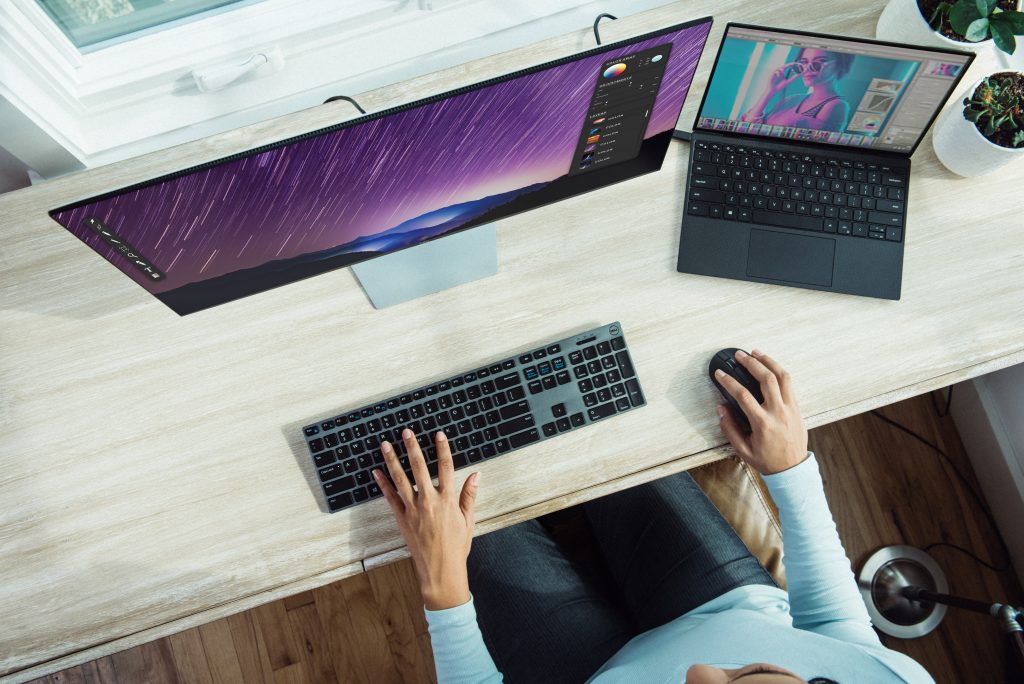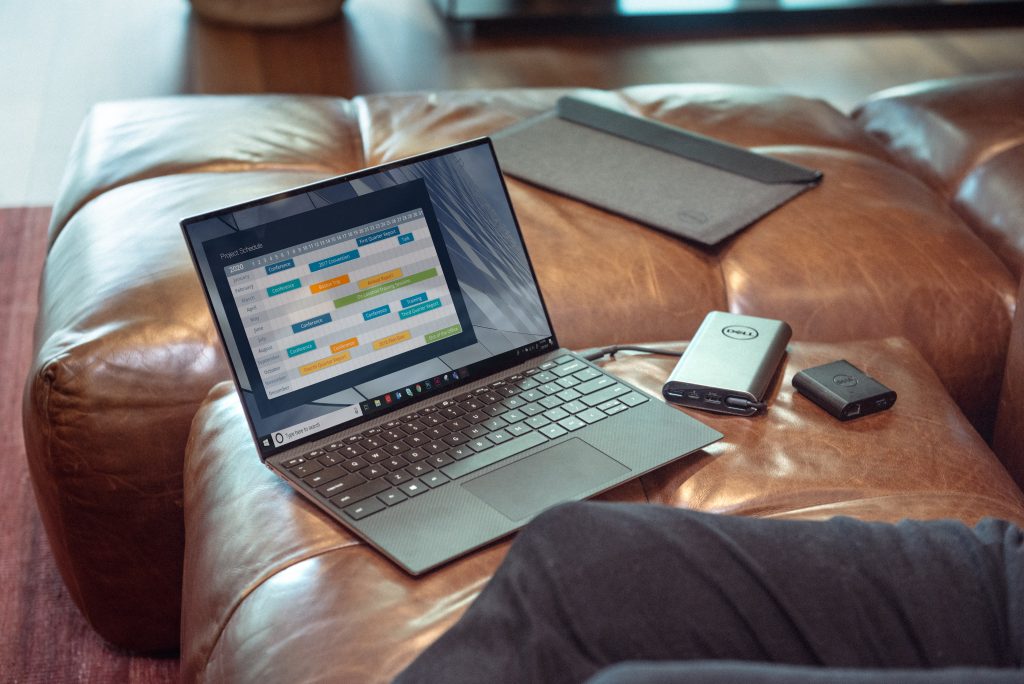Contextualizing COVID-19 and its implications for the future of work
It has been more than fifteen months since the World Health Organization declared COVID-19 a pandemic on March 11, 2020. The virus’ unprecedented infection rate, coupled with a slow global response, resulted in mandatory state lockdowns and restrictions.
In the months since the start of the pandemic, states and employers had to quickly adopt new strategies to maintain production efficiency and uphold worker safety. Overwhelmingly, the response was to move work online. COVID-19 has forever altered the notion that work must be done in the office. According to Gartner, remote work (also known as work from home [WFH] or telecommuting) is “a type of flexible working arrangement that allows an employee to work from a remote location outside of corporate offices.” Of course, remote work isn’t new. According to Pew Research, “one-in-five say they worked from home all (12 percent) or most (7 percent) of the time before the coronavirus outbreak, while 18 percent worked from home some of the time.” However, because of the pandemic, 42 percent of the US labor force worked from home in 2020. Indeed, this trend is not looking transient.
This new arrangement has been adopted by many large corporations. The topic of WFH and its effects on worker well-being has been of particular interest to corporations employing knowledge workers before the pandemic – with mixed conclusions reached by major tech companies. In 2013, Yahoo CEO Marissa Mayer famously banned telework to foster company cohesion. Meanwhile, other Silicon Valley giants increased their capacity for remote work. Now that a significant portion of the workforce has shifted online, new research could provide a more conclusive understanding of how remote work arrangements impact worker well-being.
As workers around the world adapted to a new normal amid a public health crisis, remote work took on a new meaning. However, questions about how to structure long-term telework arrangements remain. The current landscape of data reveals a tenuous relationship between well-being and telework. To secure a brighter future for our labor force, we must continue developing worker-centered technology policy and researching how to improve life at work.

The current landscape of research
Due to the unique circumstances of each nation and how they handled COVID-19, the current landscape of data reveals a tenuous relationship between well-being and telework. Most surveys of worker well-being conducted during the pandemic were not cross-sectional, and it was difficult to isolate the causality of well-being amidst a global public health crisis. Additionally, before the pandemic, most of the literature on telework’s impacts was not worker-centered; instead, most researchers opted to examine its effects on worker productivity and organizational outcomes. For example, Martin & MacDonnell conducted a meta-analysis in 2012 on the perceptions of telework and organizational outcomes with positive findings (e.g., telework increased worker productivity). On its own, one might speculate that increased productivity is associated with better worker well-being, but they are not established as causally-related variables.
In 2019, one pre-pandemic study by Charalampous et al. analyzed the relationship between telework and worker well-being. They found a “greater consensus towards a beneficial impact” but overall inconclusive results, citing “social and professional isolation and perceived threats in professional advancement to be significant negative impacts of WFH.” The authors of this study engaged in a systematic literature review of sixty-three studies “employing quantitative, qualitative, and mixed-method designs” to gain a deeper understanding of the association between remote work and well-being in knowledge workers. Overall, they advocated for more advanced studies to be conducted on this relationship, such as looking at “longitudinal data, diary studies, as well as moderating and mediating relationships”.
Moving into the pandemic, studies continue to illustrate the complicated nature of WFH’s effects on well-being. In contrast to Charalampous et al., Yijing et al.’s 2020 research illustrates a negative relationship between telework and the “social, behavioral and physical factors on well-being of office workstation users during COVID-19.” The results from their anonymized survey indicated a blanket decrease in overall physical and mental well-being and an increase in physical and mental health issues during the first few months of the pandemic. Additionally, Yijing et al. highlighted that lifestyle factors, “such as physical activity…eating habits,” and social aspects of WFH, “including who is living in the home, distractions while working, and communication with co-workers” were the primary predictors of decreased well-being. Regarding specific population impacts, this research also found that female workers and laborers making salaries of less than $100,000 were disproportionately more likely to have “two or more new physical and mental issues” transitioning to the new WFH arrangement. The mechanism behind these results will be discussed below. While these findings are compelling, it is important to note that the pandemic introduces numerous confounding factors that affect well-being. Cross-sectional surveys are prone to skew.
Currently, there is one longitudinal study released by Savolainen et al. that investigates the “psychological, situational, and socio-demographic predictors of COVID-19 anxiety among Finnish workers.” The study recruited participants from a previous longitudinal “Social Media at Work in Finland” survey, which was nationally representative and conducted before the pandemic. Savolainen et al. matched the sample of their study with the general Finnish working population and stratified participants according to their occupational fields. Overall, their results determined “loneliness, psychological distress, technostress, and neuroticism” to be “significant psychological predictors of COVID-19 anxiety of workers.” Additionally, Savolainen et al. found that “increased technology use has not entirely been able to maintain or create a meaningful psychological connection to work for communities” for remote workers. Mirroring all the previous studies, Savolainen et al. recommended for more research to be done on the relationship between telework and well-being.
While the findings of all these studies are crucial to understanding the relationship between telework and well-being, researchers are still in the process of coming to a consensus and remain hesitant to commit to a position. This is understandable, given the many competing logics behind remote work and its theoretical impacts on worker well-being.

Summary and theoretical mechanisms for remote work’s impacts on well-being
On one hand, the flexibility factor that provides workers the freedom of dictating their own work-life balance is one of the most compelling arguments for remote work increasing well-being. When employees start working from home, they suddenly have more agency regarding their time. Workers can tailor their work hours on an individual basis and have more time to attend to their personal lives. This flexibility enables workers to see their families more often and fit in appointments and errands more easily. Additionally, workers can work when they feel the most productive since they aren’t confined to a rigid office schedule. This flexibility has been shown to not decrease worker productivity or work hours; in fact, the massive shift to remote work in the first few months of the pandemic revealed an overall increase in hours.
On the other hand, remote workers have reported issues with the blurring of work-life boundaries. Research has dictated that working from home offers no separation between work and leisure time, leading to “enhanced emotional exhaustion” and a “deterioration in healthy lifestyle behaviors.” This negative effect has been speculated to manifest disproportionately between men and women. As Yijing et al. examined, there is robustness to the claim that WFH may be more challenging for women. Women are still more likely to be responsible for household chores and child-rearing. Mothers that work at home are more likely to experience the blurring of work and life boundaries leading to increased pressure. Generally, in a traditional office work setting, commuting offers a change of scenery by default and physically separates professional and home life. However, in a WFH setting, individuals need to take initiative to change their scenery, which has been shown to boost their well-being and mood. Remote workers also have a harder time communicating with coworkers through a virtual medium. It is easier to misread conversational cues through text and video calls. Charalampous et al.‘s study also illustrated that workers were more likely to perceive boundaries to professional advancement in an online setting. Additionally, Savolainen et al. introduced the concept of technostress, which mostly manifests from “back-to-back” virtual meetings, unfamiliarity with technology, and the increased work hours associated with WFH. Finally, the lack of in-person contact with co-workers can lead to isolation and disconnection, which are correlated with increased worker stress and anxiety— marked factors that decrease well-being.
In effect, acknowledging the context of the COVID-19 pandemic further complicates researchers’ ability to draw causality between remote work and well-being. This is because the pandemic introduces new moderating variables, such as fluctuating economic insecurity, isolation, and relationship breakdown caused by the lockdown, as well as increasing mistrust in the government. These new variables worsen and weaken remote work’s theoretical mechanisms on well-being. For example, the positive aspects of a flexible remote job are hampered by economic insecurity. Likewise, relationship breakdown can completely negate the usual benefits of increased family contact provided by remote work. Lastly, compounding mistrust in institutions, specifically in the healthcare sector, is a worrying trend that can promulgate the spread of COVID-19. According to a release from the Interdisciplinary Association of Population Health Sciences, people who mistrust the healthcare sector are more prone to vaccine hesitancy, less likely to report their illnesses, and underutilize healthcare— a dangerous, and perhaps deadly, combination in the context of a pandemic.
The pandemic’s asymmetric impacts on developing countries, frontline workers, and minority populations
According to a survey conducted on 1,022 American professionals in January 2021, “29 percent of working professionals say they would quit their jobs if they couldn’t continue working remotely.” A Gallup poll similarly reflects this estimate, which found 23 percent of the US workforce eager to keep their remote setting.
Despite the enthusiasm for remote work, some employees, such as those in frontline positions, cannot pivot online. In 2020, estimates between the Occupational Information Network and the Bureau of Labor Statistics show that 34 to 44 percent of Americans had the ability to telework. In western Europe Boeri et al. predicted the “home-based work potential as 24 percent for Italy, 28 percent for France, 29 percent for Germany, 25 percent for Spain, and 31 percent for Sweden and the UK” in the same year. Globally, the & International Labor Organization (ILO) forecasted in a policy brief that 18 percent of workers in 2020 had the means to shift to remote work. Considering that many developing countries are likely to possess remote work infrastructure below this global ILO average, it is undeniable that there is an asymmetry in worker access to remote labor correlated to wealth. Workers in developing countries with less robust information and communication technology infrastructure are likely to experience more amplified negative impacts of being unable to work remotely. In virtually every country, poorer workers are less likely to secure a remote job and more likely to experience job or economic insecurity, especially in the context of the pandemic.
Broadly, many of these frontline workers also tend to be poorer, suggesting that many intersecting factors are negatively affecting their well-being. According to a longitudinal study on 21,874 adults living in England between March 21, 2020, and February 22, 2021, key workers had “consistently higher levels of depressive and anxiety symptoms than non-key workers across the whole of the study period.” These key workers were defined as health and social care workers, teachers, childcare workers, public service workers, and food chain or utility workers. Another longitudinal study done on Polish healthcare workers supported the notion of exacerbated negative health outcomes for essential workers. Overall, frontline worker populations appear to face some of the worst difficulties of the pandemic.
Across all developed countries, minority populations are more likely to work in frontline occupations. A recent study by Goldman et al. revealed that “greater work exposures likely contribute to a higher prevalence of COVID-19 among Latino and Black adults in the US.” Moreover, due to historic health inequities perpetuated by institutional racism (e.g., forced sterilization and scientific racism), marginalized populations tend to have less trust in the healthcare system. As previously mentioned, this renders minority populations; more susceptible to vaccine hesitancy, healthcare underutilization, and general negative health outcomes. Additionally, as the CDCwrites, ethnic and racial minority communities have had more COVID-19 cases, deaths, and hospitalizations. Further, policies targeted to mitigate the spread of COVID-19 “might cause unintentional harm, such as lost wages, reduced access to services, and increased stress, for some racial and ethnic minority groups.” In other words, due to longstanding inequalities intensified by the pandemic, well-being among minority populations has plummeted. Altogether, asymmetric impacts on specific populations all blur the relationship between telework and well-being. Moving forward, it is important to address systemic inequalities and assess how policies impact different communities in order to close the digital divide and create a diverse and resilient workforce.

Policy recommendations from the GeoTech Center and academia
As workers around the world adapted to a new normal amid a public health crisis, remote work took on a new meaning. It symbolized the deeply intertwined relationship between labor and technology. It signified progress and the future. However, the sweeping shift to new telework arrangements also brought many questions. Is it really good for workers’ health and well-being? Who is sidelined by implementing new technology in the workplace? How can we increase the resilience of our labor supply chains in the event of a new crisis? Is there a golden ratio between in-person and remote work? Currently, the US is at a major inflection point; we must continue developing technology policy and doing research to address these important questions.
The bipartisan report by the Commission on the Geopolitical Impacts of New Technologies and Data includes a seventh chapter titled “The Future of Work,” which explores these questions and supplies recommendations for addressing the future and mitigating disaster as workers brave periods of uncertainty. Some key points from this report are combined with academic literature to provide actionable guidelines for the future of work that are relevant to both government leaders and private sector CEOs, specifically:
- To mitigate the negative impacts of WFH, employers should prioritize creating an inclusive and empathetic work culture that provides technical and psychological support online. In line with other studies, Savolainen et al. argues that higher organizational support lowers worker anxiety, especially in times of crisis (Savolainen et al., 2021).
- To alleviate feelings of social isolation during normal working hours, employers can set ‘virtual coffee breaks’ to create a more collaborative work environment (Mostafa, 2021).
- Human capital development and management data should address projections of the supply and demand for workers according to categories of technical skills, results of the search and hiring process, and how well the employer’s needs were satisfied. The data also should inform how well the training policies provided equitable access to skills training across the workforce. These data should enable analyses of the expected value of different options for skills education and training for workers, the return on the investment of workforce training for businesses, and options for adjusting workforce training policies (GeoTech Commission Report).
- Expanding on the point above, we ought to acquire data on the labor side. For example, management could implement more longitudinal questionnaires on worker well-being.
- The United States needs to ensure equitable access to opportunity for the GeoTech Decade ahead. From access to affordable broadband to digital literacy, governments and the private sector need to make significant investments and work together to reduce barriers to full participation in the economy. Ensuring that all people can participate in the GeoTech Decade requires a commitment to equitable access to affordable, high-speed Internet. Millions do not have high-speed broadband, particularly in rural areas. What is more, many with access to high-speed broadband are still unable to afford the high cost of Internet and the devices needed to access it. Lack of access and affordability perpetuates systemic inequities (GeoTech Commission Report).
- Digital literacy— the ability to find, evaluate, utilize, and create information using digital technology is becoming an essential skill for every individual. Digital literacy is an important element in eliminating a digital divide among nations and within a society. It complements affordable, high-speed Internet access by enabling people to develop and communicate local content, to communicate their issues and concerns, and to help others understand the context in which these issues occur (GeoTech Commission Report).
- In order to foster lifelong learning and digital literacy, managers could encourage employees to sharpen their skills with new learning opportunities and online training through free online professional development webinars and training sessions (Mostafa, 2021). These events can be found through Khan Academy, the Atlantic Council, and many other online platforms.
Matthew Gavieta is a Young Global Professional with the GeoTech Center as well as a rising senior at Cornell University, where he majors in industrial and labor relations and minors in philosophy and law & society. He is most interested in the intersection of law, policy, and technology. He hopes to do work in the field of intellectual property to promote safe, large-scale innovation and creativity.